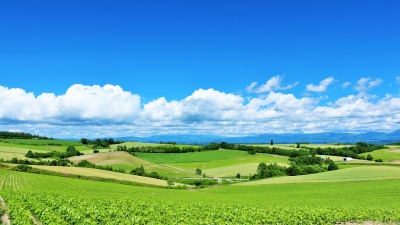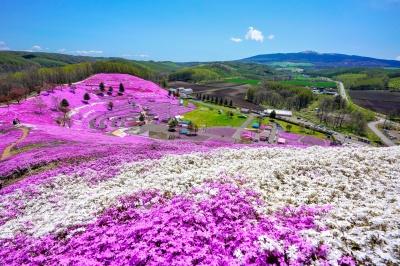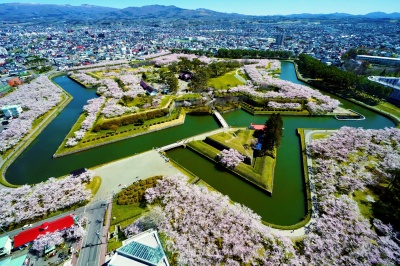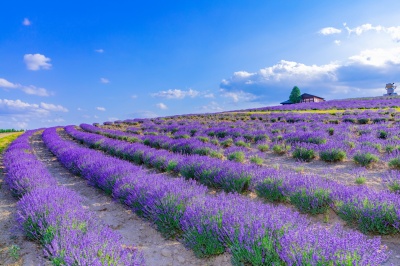Sustainable Furniture from Northern Hokkaido

Asahikawa in the northern part of Hokkaido is perhaps best known for the nearby Daisetsu Mountain Range, a popular place for both hiking and skiing. The city itself, the second largest in Hokkaido, has a rustic charm, with the ubiquitous Yakitori houses serving up grilled chicken – the soul food of the region. There is another aspect to Asahikawa that is perhaps lesser known to foreign travelers, that is its status as one of the top furniture manufacturing hotspots in all of Japan. Finding its origins as a supplier of wood for a nearby army base, in post-war Japan the region’s loggers and woodworkers quickly pivoted to a more sustainable business: furniture. Today, there are no less than 35 furniture makers in the area, ranging from small mom-and-pop shops all the way to large-scale operations. Amongst them is Kitanosumai Sekkeisha, which is actually based out of nearby Higashikawa – the only town in Hokkaido that does not have a water supply, and uses the groundwater that the thawed water of Daisetsuzan slowly flows over time as domestic water, that has recently seen its stock rise as an influx of new inhabitants crave a more relaxed lifestyle.
- * Please note that the text shown on this page includes machine translations.
Profile
President and Representative Director of Kitanosumai Sekkeisha Co., Ltd.
Mr. Yasuhiro Watanabe
Born in Hokkaido in 1945. In 1978, he became independent from the design office, and in 1985 he renovated a closed elementary school in Higashikawa Town and established "Kitanosumai Sekkeisha Co., Ltd." We make furniture using solid wood from Hokkaido, making use of the handiwork of our craftsmen.
European design and Hokkaido materials
Kitanosumai Sekkeisha is run by Yasunobu Watanabe and can look back at a more than 30-year history that began in the 1980s. As Watanabe recalls: “I was always interested in European designs, whether they be from Scandinavia or England. However, travelling through Europe also made me realize the potential of Hokkaido.” It is a story many people that travel often will relate to: “Going abroad made me realize what I had at home. The great nature, the excellent quality of the wood here, all of things naturally lend themself to making furniture.” While his initial thought process led him back home to Hokkaido, he was still in awe by European designs. “I knew that the material in Hokkaido was incredible, but I was unsure whether I could design furniture that is up to snuff.” So, he enlisted help, inviting a young designer named Jakob from Sweden to Japan.
Products for the people of Hokkaido
“In the late 1980s, it was still uncommon for foreigners to come work in Japan, and especially in Hokkaido. However, we were able to invite him over, and I must admit most of our early designs came from him.” The Scandinavian commitment to minimalism, functionality and longevity is still apparent in Kitanosumai’s furniture today, although today the staff is exclusively Japanese. “Scandinavia and Hokkaido obviously share many similarities, mainly in climate and landscape. However, I fell a certain power in the trees here. They grow to be strong, and I knew I had to make use of this power.” He has used the same supplier for locally grown Hokkaido trees for decades now. “Hokkaido’s nature is simply different. It is unique in the world.”
Another major ideal Watanabe espouses is sustainability. “We want to make sure to only take from nature that which it not needs to survive. Furthermore, when we talk about longevity, we try to mean it. It is unsustainable to our environment to buy furniture only to discard it after a few years. We want to build pieces that will last a lifetime, or longer.” He has noticed that the mood of the people around him gradually seems to have caught up with his philosophy. “While we still have a long way to go, we do believe we fit perfectly with the recent movement towards buying local and sustainable products, products that do not burden our environment. The pandemic, while bringing many hardships, also allowed us to take a step back and look towards our homes, to appreciate what we have and to renew our commitment to protect it.”
This commitment to sustainability permeates every choice made through the extensive design process. “It is easy to say, but it requires commitment at every level – from the supply chain to the design and building process.” What researchers call “Neolocalism” seems to come natural to Watanabe. “We have pivoted to becoming a company that is not only rooted in Hokkaido, but also wants to make products for the people of Hokkaido.”
Pioneers who moved to Higashikawa Town
Higashikawa seems an unlikely locale for such an enterprise, especially considering the early commitment to the small town. “Of course, many of our competitors are from Asahikawa, but I decided to build something here.” Apparently, it was an old professor of Watanabe’s who gave him the impulse to come to Higashikawa. “At the time, most people probably thought we were crazy. But today, Higashikawa is experiencing a boom, with young designers, artists and other creatives moving to town.” While he was certainly pioneering in his choice of locale, Watanabe is still unfazed by the recent popularity the town has enjoyed. “I am not concerned with what has been happening recently. I prefer to focus on my company and continuing with our mission.”
The atmosphere we've created here
If you have a chance to visit Kitanosumai Sekkeisha, you will find that it is way more than just a furniture shop. Indeed, aside from the furniture showroom there is also a select shop, a bakery as well as a café-restaurant. “We wanted to create a homely atmosphere, and it somehow evolved to what it is today.” This evolution has had an interesting side effect. “In recent years, we also have welcomed many foreigners – despite that fact that it is quite difficult to buy furniture as a souvenir. I think the atmosphere that we have built here is quite nostalgic for many people, and transcends cultures to be something most people can find pleasure in.” Indeed, the quaint bakery and minimalistic restaurant space definitely have their charms, making it a spot that is worth a visit even if you are not looking to remodel your house. As Watanabe sums up: “Even if you are unable to buy our products, I hope you come visit. I believe that a visit to our showroom can showcase the power of Hokkaido’s majestic trees, while having a coffee, some baked goods, or a good lunch always makes for a relaxing afternoon.” We could not agree more.
Ranking of popular articles
- Hokkaido Summer Travel Guide

- https://www.visit-hokkaido.jp/en/feature/travelguide_summer
- Hokkaido Spring Travel Guide

- https://www.visit-hokkaido.jp/en/feature/travelguide_spring
- Here are the recommended cherry blossom viewing spots!

- https://www.visit-hokkaido.jp/en/feature/sakura
- Best Places to View Flowers in Hokkaido vol. 1

- https://www.visit-hokkaido.jp/en/feature/best-places-to-view-flowers-in-hokkaido-vol-1
- When is the best time to see lavender? Recommended Lavender Spots in Hokkaido

- https://www.visit-hokkaido.jp/en/feature/lavender




